In recent years, the contact grill market has seen a surge in popularity, transforming the way consumers enjoy their cooking experiences. This article delves into the evolving landscape of the contact grill industry, exploring the latest market trends, consumer preferences, technological advancements, distribution channels, successful OEM partnerships, challenges, and predictions for the future. Join us as we navigate the hotspots of this dynamic sector.
The Rise of Contact Grills in the European and American Markets
The contact grill has quietly risen to become a staple in European and American kitchens, transforming the way we cook and enjoy our meals. Once a niche product, this innovative cooking appliance has now captured the hearts and taste buds of consumers across the continent. Let’s delve into the factors that have contributed to the meteoric rise of contact grills in these markets.
Gone are the days when cooking meant a long, labor-intensive process. The convenience and efficiency of contact grills have made them a favorite among busy professionals, families, and culinary enthusiasts alike. These grills offer a unique way to cook food, sealing it between two heating plates for an even, smoky flavor that’s hard to replicate with traditional cooking methods.
In Europe, the contact grill has found a particularly welcoming market. The continent’s diverse culinary traditions and the growing demand for healthier cooking options have propelled the popularity of contact grills. Health-conscious consumers are drawn to the appliance’s ability to cook with less oil, which not only reduces calories but also preserves the natural flavors of the food.
The American market, known for its love of outdoor cooking, has also embraced the contact grill. Barbecues and grilling are deeply rooted in American culture, and the contact grill offers a new twist on these classic practices. It’s the perfect indoor solution for those who want to enjoy the taste of grilled food without the hassle of outdoor grilling.
One of the key drivers behind the rise of contact grills is their versatility. These appliances can cook a wide range of foods, from meats and vegetables to sandwiches and pizzas. The even distribution of heat ensures that every bite is perfectly cooked, with a delicious char and grill marks that are the hallmark of great grilling.
Another important factor is the technology that has been integrated into modern contact grills. Features like adjustable temperature settings, non-stick surfaces, and programmable cooking times have made these grills user-friendly and adaptable to various cooking styles. The ability to sear, grill, and even bake in one appliance has made it a must-have for many home cooks.
The European Union’s CE marking, which stands for Conformité Européenne, has also played a significant role in the adoption of contact grills. This certification ensures that products meet all the necessary safety, health, and environmental protection requirements. Consumers are increasingly looking for CE-konforme products, knowing that they are purchasing a safe and reliable appliance.
In the United States, the demand for CE-konforme contact grill manufacturers has grown as American consumers become more aware of international standards. OEM (Original Equipment Manufacturer) partnerships have become a common sight, with European and American companies collaborating to bring the best of both worlds to the market.
The rise of contact grills has not been without its challenges. Competition is fierce, with many brands vying for a share of the market. To stand out, manufacturers have had to focus on innovation, offering new features and designs that appeal to consumers’ desires for both functionality and style.
The market for contact grills has also seen a shift towards sustainability. As consumers become more environmentally conscious, manufacturers are responding by producing grills that are energy-efficient and made from recyclable materials. This trend is likely to continue as the industry evolves.
In conclusion, the rise of contact grills in the European and American markets is a testament to the power of innovation and consumer demand. As these appliances continue to evolve, they are sure to play an even more significant role in the way we cook and enjoy our meals.
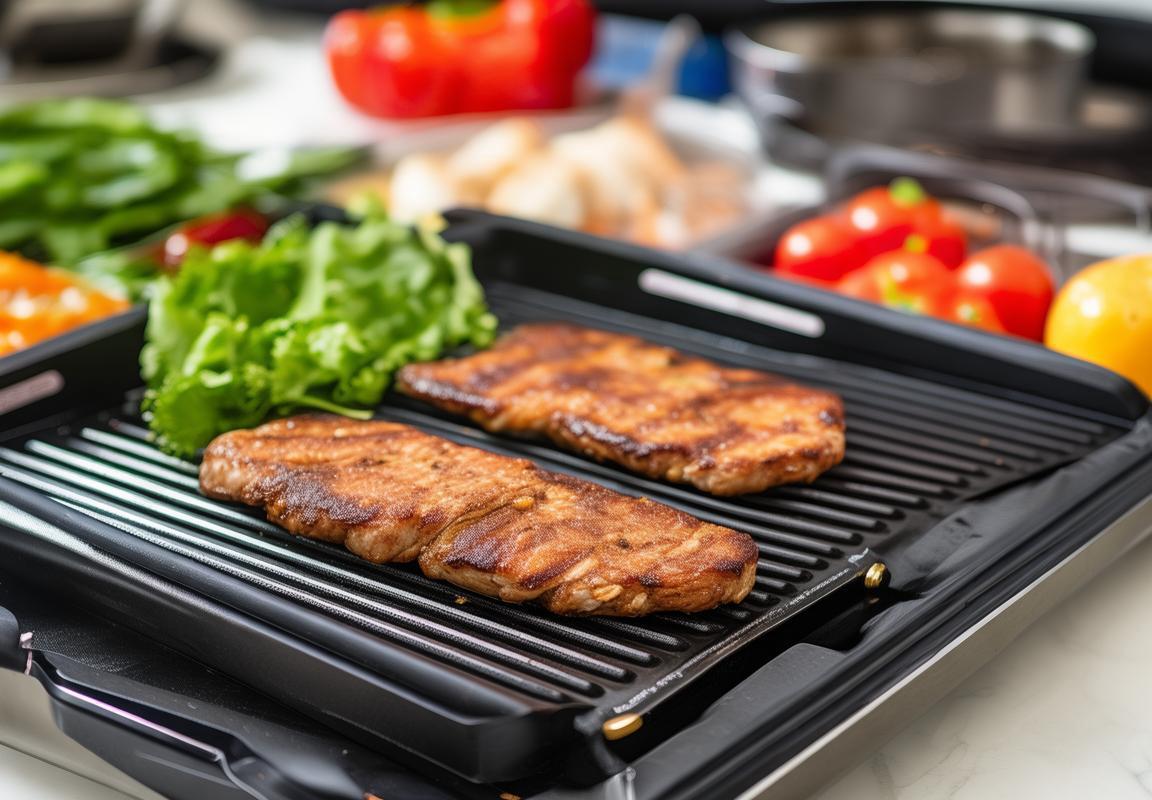
Understanding CE Konforme Standards
In the bustling markets of Europe and America, contact grills have quietly surged in popularity, becoming a staple in many kitchens. These compact cooking appliances offer a unique cooking experience, sealing food in a sandwich-like press, which not only locks in flavors but also provides a beautifully caramelized finish. The convenience and versatility of contact grills have made them a must-have for culinary enthusiasts and busy professionals alike.
The sleek design of contact grills, often with non-stick surfaces and easy-to-clean features, has also contributed to their appeal. They’re perfect for grilling burgers, sandwiches, and even vegetables, all in one appliance. As the demand for these grills has grown, so too has the competition among manufacturers, leading to a variety of models with different features and price points.
In the United States, the trend towards healthier eating habits has played a significant role in the popularity of contact grills. With an increasing number of consumers looking for ways to cook their food with minimal oil, these grills have become a go-to choice. The ability to cook a variety of foods without the need for excessive oil has made them a health-conscious consumer’s best friend.
Similarly, in Europe, contact grills have found their place in the diverse culinary landscape. From the bustling streets of Paris to the cozy homes in Scandinavia, these grills offer a quick and efficient way to prepare delicious meals. The versatility of contact grills means they can cater to both quick weekday meals and weekend culinary adventures.
The European and American markets have different preferences when it comes to features and design. In the U.S., consumers often prefer grills with larger cooking surfaces, while in Europe, compact and portable designs are more sought after. This regional diversity has spurred manufacturers to develop products that cater to specific market needs, leading to a rich variety of contact grill options.
As the market continues to grow, manufacturers are also focusing on innovation. Smart features, such as digital temperature controls and programmable settings, are becoming increasingly common. These advancements not only enhance the cooking experience but also make contact grills more accessible to a wider audience, including those who may not be as confident in the kitchen.
The rise of contact grills in these markets has also been bolstered by strong marketing strategies. Brands are leveraging social media, influencer partnerships, and targeted advertising to reach potential customers. The ability to showcase the ease of use and the delicious results of cooking with a contact grill has been a powerful tool in driving sales.
In addition to the consumer market, contact grills have also found their way into commercial settings. Restaurants and cafes are increasingly using these appliances to offer quick and satisfying menu items. The efficiency and consistency that contact grills provide are attractive to businesses looking to streamline their kitchen operations.
Despite the growing popularity, the contact grill market is not without its challenges. Consumer preferences can change rapidly, and manufacturers must be prepared to adapt. Additionally, the competitive landscape means that companies must constantly innovate to stay ahead.
In conclusion, the rise of contact grills in the European and American markets is a testament to the power of innovation, consumer demand, and effective marketing. As the market continues to evolve, it will be fascinating to see how contact grills will further integrate into the daily lives of consumers and contribute to the ever-changing culinary landscape.

Top Contact Grill Manufacturers: A Closer Look
In the bustling world of kitchen appliances, contact grills have made a significant mark, particularly in the European and American markets. These versatile cooking tools have gained popularity due to their convenience and ability to sear food to perfection. Let’s take a closer look at some of the top contact grill manufacturers that are leading this trend.
German engineering prowess is well-known, and it’s evident in the products from Gaggenau. Their contact grills are not just cooking appliances; they are a testament to German precision and quality. With sleek designs and advanced features, Gaggenau’s grills are a favorite among culinary enthusiasts and professionals alike.
On the other side of the Atlantic, George Foreman has become synonymous with contact grills. The brand has a legacy of innovation and durability, offering a range of models that cater to different cooking styles and preferences. Their iconic flat-top grills are known for their even heat distribution and ease of use, making them a staple in many homes.
Italian design meets practicality in the contact grill offerings from DeLonghi. Known for their home appliances, DeLonghi’s contact grills are a blend of aesthetic appeal and functionality. They often come with a host of features, such as adjustable temperature settings and non-stick surfaces, ensuring that cooking is both enjoyable and efficient.
Japanese precision is another factor that sets contact grill manufacturers apart. Sunbeam, a brand with roots in Japan, offers a variety of contact grills that combine the latest technology with traditional cooking methods. Their grills are known for their even cooking and easy-to-clean surfaces, making them a favorite among busy cooks.
When it comes to innovation, Swiss brand Miele stands out. Their contact grills are not just cooking appliances but also works of art. Miele’s commitment to quality is reflected in the attention to detail and the use of high-quality materials. Their grills often come with cutting-edge features like built-in timers and programmable settings, catering to the needs of the modern kitchen.
American brand Hamilton Beach has a reputation for affordability without compromising on quality. Their contact grills are designed with the everyday cook in mind, offering a range of models that suit different budgets and cooking styles. Hamilton Beach’s commitment to customer satisfaction is clear in their durable and user-friendly products.
In the UK, Breville has been a leader in kitchen appliances for decades. Their contact grills are known for their robust construction and reliable performance. Breville’s products often feature advanced cooking technologies, such as variable heat controls and non-stick surfaces, making them a go-to choice for many home chefs.
For those who prefer a sleek, modern look, German brand Smeg offers contact grills that are as stylish as they are practical. Their designs often incorporate retro aesthetics, appealing to a wide audience who value both form and function in their kitchenware.
While these brands are among the most recognized in the contact grill market, it’s important to note that competition is fierce. New entrants and established players are constantly striving to improve their offerings, whether through enhanced cooking capabilities, improved user interfaces, or sustainable materials.
The top contact grill manufacturers understand that innovation is key to staying ahead. They invest in research and development to introduce new features and technologies that can improve the cooking experience. Whether it’s the ability to cook multiple foods at once, the inclusion of health-focused options like smokeless cooking, or the integration of smart technology, these brands are continuously pushing the boundaries of what a contact grill can do.
Ultimately, the choice of a contact grill often comes down to personal preference and cooking habits. Whether you’re a fan of German engineering, Italian design, or Japanese precision, there’s a brand out there that will meet your needs. As the market continues to evolve, these top manufacturers are poised to lead the way, bringing new and exciting cooking solutions to the kitchen table.
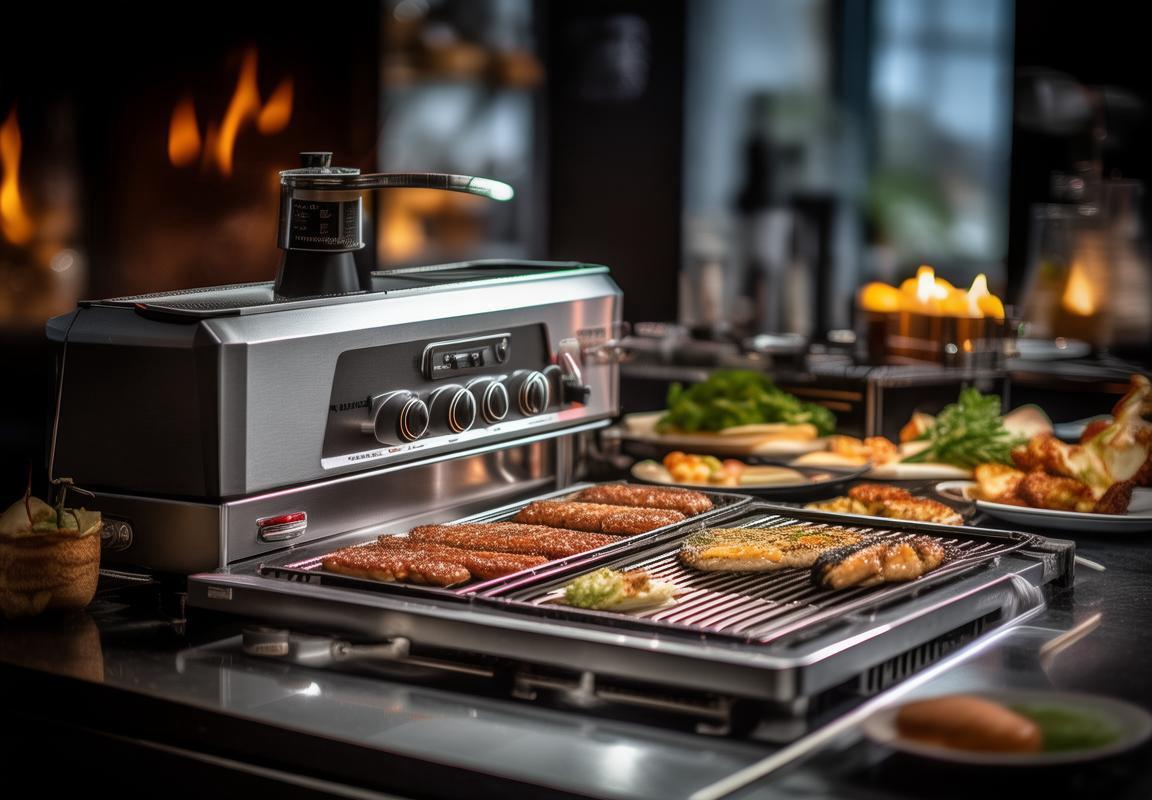
OEM Opportunities in the Contact Grill Sector
In the ever-evolving world of kitchen appliances, the contact grill market has seen a surge in demand, especially in Europe and the Americas. For manufacturers looking to tap into this growing sector, the OEM (Original Equipment Manufacturer) route offers a wealth of opportunities. Here’s a closer look at what these chances entail:
Grill designs have evolved significantly, and OEMs play a pivotal role in shaping these innovations. They often collaborate with brands to create custom products that cater to specific market needs or consumer preferences. By doing so, OEMs can contribute to the development of advanced features, such as variable heat settings, non-stick surfaces, and even smart technology integration.
One of the most attractive aspects of OEM opportunities in the contact grill sector is the ability to diversify product lines. OEMs can produce grills in various sizes, styles, and functionalities, from compact countertop models to large commercial units. This flexibility allows them to cater to different customer segments, from home cooks to professional chefs, without the need for extensive R&D or production capabilities.
The partnership between OEMs and brands can lead to unique selling propositions (USPs) that set a product apart from the competition. For instance, an OEM might develop a grill with a unique cooking surface technology or a special heating element that offers superior performance. This not only enhances the product’s appeal but also opens up new markets, such as eco-friendly or health-conscious consumers.
Supply chain management is a critical component of OEM operations. With the contact grill market’s global reach, OEMs must navigate complex supply chains to ensure timely delivery and cost-effectiveness. This includes sourcing high-quality materials, managing logistics, and adhering to international standards, which can be a significant advantage for companies with established global networks.
Customization is another key opportunity within the OEM sector. Brands often seek out OEMs to produce grills with their logos, specific designs, or even unique cooking patterns. This not only allows for brand differentiation but also provides a tailored experience for the end consumer. OEMs with the capability to offer such services can secure long-term partnerships and build a reputation for quality and innovation.
Quality control is paramount in the OEM space, especially when it comes to kitchen appliances. Consumers expect a certain level of performance and safety from their contact grills, and OEMs must meet these expectations. This involves rigorous testing, compliance with international safety standards, and a commitment to continuous improvement. By focusing on quality, OEMs can establish a strong reputation and gain a competitive edge.
The contact grill market is also ripe with opportunities for innovation in terms of sustainability. As consumers become more environmentally conscious, OEMs can capitalize on this trend by producing grills made from recycled materials or with energy-efficient designs. This not only appeals to eco-friendly buyers but also aligns with the broader shift towards sustainable practices in the appliance industry.
Moreover, the integration of smart technology presents a fresh avenue for OEMs. By incorporating features like Bluetooth connectivity, remote control, and recipe suggestions, OEMs can create a product that not only cooks but also educates and engages the user. This type of innovation can set a brand apart and attract tech-savvy consumers.
The global nature of the contact grill market means that OEMs must be adaptable to various cultural preferences and regulatory environments. This adaptability is crucial for successful OEM partnerships, as it allows for the creation of products that resonate with local markets while still maintaining a high standard of quality and safety.
In conclusion, the contact grill sector offers a multitude of OEM opportunities. From product customization and innovation to sustainability and smart technology integration, OEMs that can navigate these avenues effectively stand to benefit significantly. The key lies in understanding the market dynamics, building strong partnerships, and maintaining a focus on quality and customer satisfaction.

Market Trends and Consumer Preferences
In recent years, the market for contact grills has seen a surge in popularity, driven by several key trends and shifting consumer preferences. These factors have not only shaped the landscape of the industry but also opened up new avenues for innovation and growth.
The increasing demand for healthier cooking methods has propelled the contact grill market. Consumers are becoming more health-conscious, looking for alternatives to deep-frying and oil-based cooking methods. Contact grills offer a way to cook food with minimal oil, making them an attractive option for health enthusiasts.
Gourmet cooking has also played a significant role in the market’s rise. As people become more adventurous in the kitchen, they are seeking out unique and flavorful food experiences. Contact grills provide a versatile cooking surface that can be used to create a variety of dishes, from classic burgers and steaks to more exotic items like Asian-inspired skewers and Mediterranean-style seafood.
The convenience factor cannot be overlooked. Contact grills are compact and easy to use, making them a practical choice for busy households and those with limited counter space. Their fast cooking times and ease of cleaning have also contributed to their popularity.
The integration of smart technology has been a game-changer. With features like adjustable temperature controls, preset cooking programs, and even Bluetooth connectivity for remote monitoring, modern contact grills offer a level of convenience and control that was once unimaginable.
Consumers are also increasingly valuing sustainability. Eco-friendly materials and energy-efficient designs are becoming more common in the contact grill market, as consumers seek out products that align with their environmental values.
One of the latest trends is the emphasis on customization. Brands are offering a wider range of grill plates, from non-stick surfaces to cast iron, allowing consumers to choose the one that best suits their cooking style and dietary needs. This shift towards personalization has opened up new opportunities for manufacturers to cater to niche markets.
Another important trend is the crossover between contact grills and air fryers. As consumers become more aware of the health benefits of air frying, some contact grill models are incorporating air frying capabilities, offering a combination of the two cooking methods in one appliance.
In terms of consumer preferences, the demand for convenience and speed is clear. Many consumers are looking for quick, easy meals that they can prepare without a lot of effort. Contact grills fit this bill perfectly, as they can cook a meal in a fraction of the time it takes to prepare a traditional meal on the stovetop or in the oven.
Additionally, there’s a growing preference for high-quality materials and durable construction. Consumers are willing to invest in a contact grill that will last for years, rather than opting for a cheaper, lower-quality model that may not stand the test of time.
Health and wellness are top of mind for many consumers, and contact grills are a testament to this shift. The rise of plant-based diets has also influenced the market, with some brands offering grill plates designed specifically for vegetables and vegan foods.
When it comes to branding and marketing, there’s a trend towards authenticity and storytelling. Consumers are more likely to purchase from brands that they feel a connection with, and companies are leveraging the power of social media and influencer partnerships to build strong, relatable brands.
Finally, the market for contact grills is global, with different regions showing unique preferences. For example, in Europe, there’s a strong focus on innovation and smart technology, while in the United States, there’s a greater emphasis on convenience and speed.
As the contact grill market continues to evolve, it’s clear that market trends and consumer preferences are driving the industry forward. By staying attuned to these shifts, manufacturers can create products that not only meet but exceed consumer expectations, fostering growth and success in this dynamic sector.

The Impact of Technology on Contact Grill Design
In recent years, the contact grill market has seen a remarkable transformation, largely driven by technological advancements. These innovations have not only enhanced the functionality of contact grills but have also reshaped consumer expectations and usage patterns. Let’s delve into how technology has impacted the design of contact grills.
Grill Surface Technology
One of the most significant technological advancements in contact grill design is the evolution of the grill surface itself. Early models often featured simple, flat surfaces that were effective but lacked the ability to mimic the grill marks of traditional outdoor grilling. Modern contact grills now come with textured surfaces that can create authentic-looking grill patterns, thanks to advanced heat-conducting materials and precise temperature control.
Smart Temperature Control
The integration of smart technology has revolutionized the way contact grills are designed. With the introduction of digital temperature controls, users can now set and maintain precise temperatures with ease. This feature is particularly beneficial for those who want to replicate the perfect sear on steaks or achieve the ideal char on vegetables. The ability to adjust the temperature dynamically ensures that the grill can handle a variety of cooking techniques, from searing to slow-cooking.
Non-Stick Coatings
The development of non-stick coatings has been a game-changer for contact grill design. These coatings not only make cleaning easier but also reduce the risk of food sticking to the grill surface. Early contact grills often suffered from food sticking issues, which could lead to uneven cooking and a shorter lifespan for the grill. Today’s non-stick coatings are more durable and heat-resistant, allowing for consistent performance over time.
Safety Features
Safety has always been a priority in appliance design, and contact grills are no exception. Modern contact grills are equipped with various safety features that protect both the user and the appliance. Auto shut-off functions prevent overheating and potential fires, while cool-touch handles ensure that users can safely handle the grill even when it’s in use. These features have become standard in high-quality contact grill models.
Cooking Programs and Presets
The introduction of cooking programs and presets has made contact grills more user-friendly than ever. Users can select from a variety of pre-programmed settings that automatically adjust the temperature and cooking time for different types of food. This technology takes the guesswork out of grilling and allows even beginners to achieve professional results. The ability to customize these programs also caters to the preferences of experienced grillers who may want to experiment with different cooking styles.
Energy Efficiency
Energy efficiency has become a crucial factor in the design of contact grills. As consumers become more environmentally conscious, manufacturers are focusing on reducing energy consumption without compromising performance. Modern contact grills are designed to heat up quickly and maintain consistent temperatures, which not only saves energy but also reduces cooking times. This focus on efficiency is a testament to the industry’s commitment to sustainability.
Cooking Performance Enhancements
Technological advancements have also led to improvements in cooking performance. Features like variable heat zones allow for more precise control over cooking areas, ensuring that different parts of the food are cooked to perfection. Some models even come with steam functions, which can be used to cook delicate foods like fish or to tenderize meat. These enhancements have expanded the capabilities of contact grills, making them versatile cooking tools for a wide range of recipes.
Interactive and Connected Cooking
The rise of the smart kitchen has brought contact grills into the connected era. Many modern models are compatible with smartphones and tablets, allowing users to control the grill remotely through dedicated apps. These apps can provide real-time temperature readings, cooking progress updates, and even recipe suggestions. This level of connectivity not only adds convenience but also encourages users to explore new cooking methods and recipes.
In conclusion, technology has had a profound impact on the design of contact grills. From advanced grill surfaces and smart temperature control to safety features and energy efficiency, these innovations have transformed the way we cook and enjoy our meals. As technology continues to evolve, we can expect even more exciting features to be integrated into contact grill designs, making them more efficient, user-friendly, and versatile than ever before.
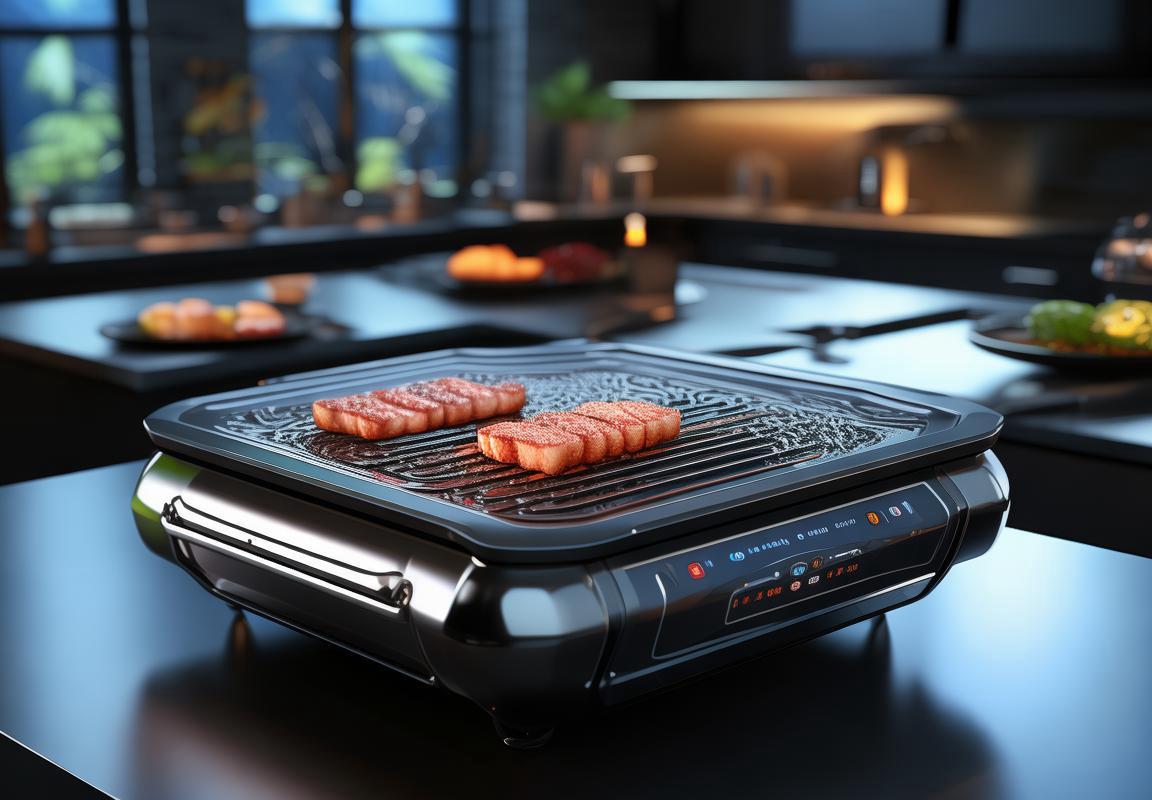
Distribution Channels and Retail Dynamics
The contact grill market has seen a surge in demand, and with it, a complex network of distribution channels and retail dynamics has emerged. Understanding how these channels operate and how they affect consumer access to contact grills is crucial for manufacturers and retailers alike.
In today’s retail landscape, contact grills are available through a variety of channels, each with its own set of advantages and challenges. One of the most common channels is the traditional brick-and-mortar retail stores. These locations provide a tangible experience for consumers, allowing them to feel and touch the product before making a purchase. However, with the rise of e-commerce, this physical presence is not always a necessity.
E-commerce platforms have become a cornerstone in the distribution of contact grills. Online marketplaces like Amazon, Walmart, and eBay offer a vast array of options to consumers, often with competitive pricing and convenient shipping options. The ability to compare different models and read customer reviews directly impacts the purchasing decisions of many consumers.
Specialty kitchen appliance stores have also played a significant role in the distribution of contact grills. These stores cater to consumers who are specifically looking for high-quality kitchen gadgets and are willing to pay a premium for them. The personalized service and expert advice available at these stores can be a deciding factor for many shoppers.
Home improvement and department stores have also jumped into the contact grill market, recognizing the demand for these versatile cooking devices. These larger retail chains often offer a broad range of products and services, making them a one-stop shop for consumers looking for both kitchen appliances and home improvement items.
The retail dynamics of the contact grill sector are shaped by several key factors. For one, the seasonality of the product plays a crucial role. Contact grills are most popular during the warmer months when outdoor cooking becomes more prevalent. This seasonal demand affects inventory levels and marketing strategies for retailers.
Additionally, the competitive landscape is constantly evolving. As new manufacturers enter the market, they bring innovative designs and features that can disrupt the status quo. Established brands must stay on top of these trends and adapt their product offerings to remain competitive.
Consumer preferences are also a driving force in retail dynamics. Modern consumers are more health-conscious and looking for cooking solutions that align with their lifestyle choices. This preference for healthier cooking methods has led to an increased interest in contact grills, which offer a way to cook food without the addition of extra fats or oils.
The rise of the DIY movement has also had a significant impact on distribution channels. Many consumers are now looking to create their own unique cooking experiences at home. As a result, retailers and manufacturers are increasingly offering customizable options and accessories that allow consumers to personalize their contact grills.
Moreover, the integration of technology into contact grill design has changed the retail experience. Smart grills with connectivity features allow users to control their cooking through apps, and these advanced models are often found in electronics and specialty appliance stores. This crossover into technology retailing opens up new opportunities for distribution.
Lastly, the importance of social proof and influencer marketing cannot be overstated. As consumers turn to online reviews and social media influencers for product recommendations, retailers must ensure their online presence is robust and that they can leverage these channels to drive sales.
In conclusion, the distribution channels and retail dynamics of the contact grill sector are multifaceted, influenced by everything from e-commerce to seasonal demand. By staying attuned to these trends and understanding consumer preferences, manufacturers and retailers can navigate the market successfully and meet the needs of the modern consumer.

Case Studies: Successful OEM Partnerships
In the competitive landscape of the contact grill market, successful Original Equipment Manufacturers (OEM) partnerships have become the backbone of many brands’ strategies. These collaborations aren’t just about production; they’re about innovation, brand expansion, and customer satisfaction. Let’s delve into a few notable case studies that highlight the fruits of such partnerships.
One of the standout examples is the collaboration between a leading European contact grill manufacturer and a prestigious kitchen appliance brand. This partnership allowed the manufacturer to integrate advanced features into their product line, such as smart cooking capabilities and sleeker designs. The kitchen appliance brand, in turn, leveraged the manufacturer’s expertise in heat distribution and durability, creating a premium line of grills that appealed to discerning consumers.
This joint effort resulted in a product that balanced innovation with user-friendly interfaces, making high-tech cooking accessible to a broader audience. The combined marketing power of both brands helped to launch the grills into the luxury market, where they found a niche for health-conscious and tech-savvy consumers.
Another success story involves a well-known American OEM that specializes in energy-efficient appliances. Recognizing the growing trend of eco-consciousness among consumers, they paired up with a reputable contact grill maker to develop a range of energy-saving grills. The partnership allowed the OEM to integrate their advanced energy-saving technology into the contact grills, without compromising on performance.
This collaboration not only positioned the grills as eco-friendly but also opened up new markets for the OEM, which had previously been focused on larger kitchen appliances. The result was a product line that appealed to a dual audience—those looking for sustainable cooking solutions and those seeking high-quality appliances with a smaller environmental footprint.
A third case study features a smaller, independent contact grill manufacturer that made a strategic move by partnering with a renowned global brand. By doing so, the manufacturer gained access to a vast distribution network and a wealth of marketing resources. This allowed them to expand their reach and credibility in the market, especially in regions where they previously had limited presence.
The partnership also provided the independent manufacturer with the opportunity to refine their design and manufacturing processes, drawing upon the global brand’s expertise in quality control and supply chain management. This exchange of knowledge led to improvements in their products, making them more reliable and competitive in the international market.
These partnerships demonstrate that successful OEM relationships often hinge on the sharing of resources and knowledge. For example, one grill manufacturer might excel in design and innovation, while another might have a knack for supply chain optimization. By pooling their strengths, these companies can create a powerful synergy that enhances both their individual capabilities and the collective success of their products.
Moreover, successful OEM partnerships are often characterized by a clear alignment of goals and values. When both parties are committed to delivering exceptional products and services, the result is a collaborative effort that resonates with customers. This can manifest in everything from the development of new features and functionalities to the enhancement of customer service and support.
In conclusion, the case studies of successful OEM partnerships in the contact grill sector underscore the importance of collaboration in an industry that is constantly evolving. These alliances not only drive innovation but also contribute to the overall growth and success of companies, both large and small. Whether it’s about expanding market reach, sharing resources, or co-creating cutting-edge products, the benefits of OEM partnerships are clear and compelling.
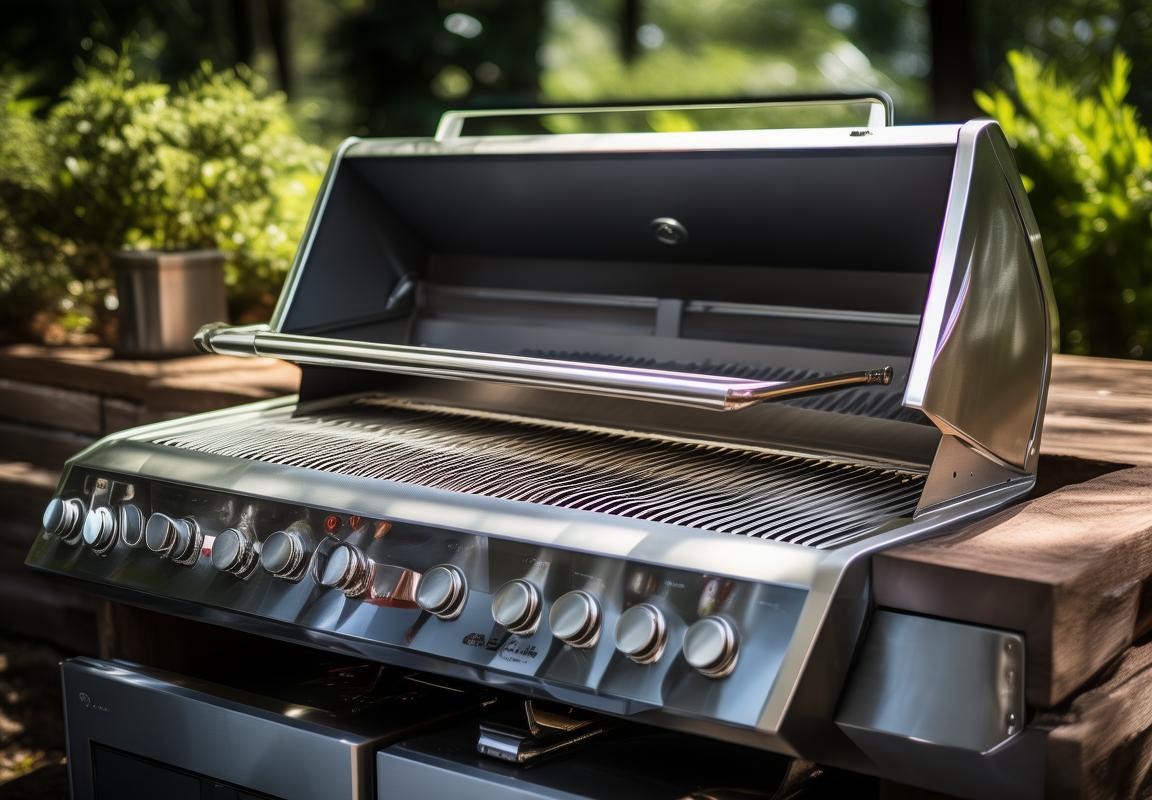
Challenges and Solutions in the Contact Grill Industry
In the ever-evolving contact grill industry, challenges and solutions are as integral to the landscape as the grills themselves. From adapting to consumer demands to navigating regulatory hurdles, here’s a glimpse into the complexities and the strategies that are shaping the future of this sector.
Grill manufacturers are facing the relentless pressure to innovate while maintaining quality and affordability. As the market becomes more saturated with competitors, differentiation becomes key. One solution is the integration of smart features, such as Bluetooth connectivity and temperature control, which not only enhance user experience but also open up new avenues for customization and data collection.
Regulatory compliance is another significant challenge. The CE Konforme standard, for instance, requires that products meet the essential health, safety, and environmental protection requirements of the European Union. This means that manufacturers must invest in rigorous testing and certification processes, which can be costly and time-consuming. However, companies that successfully navigate these requirements often gain a competitive edge by being able to market their products as “CE certified,” which can be a strong selling point in Europe and beyond.
The demand for eco-friendly products is on the rise, and contact grill manufacturers are responding with sustainable designs and materials. Biodegradable packaging, energy-efficient components, and recyclable materials are becoming standard features. While these changes can increase production costs, they also appeal to environmentally conscious consumers and can be leveraged as a unique selling proposition.
Consumer expectations are shifting towards convenience and health. As a result, contact grills with features like removable non-stick surfaces for easy cleaning and those that allow for grilling a variety of foods, including vegetables and meats, are becoming more popular. Manufacturers are also addressing concerns about food safety by incorporating features that reduce the risk of cross-contamination.
Innovation in cooking technology isn’t just about new features; it’s also about improving the overall cooking experience. For instance, the development of contact grills with adjustable heat settings and programmable cooking modes allows users to achieve perfect results with minimal effort. These advancements not only cater to the needs of the busy professional but also to the home chef looking to elevate their culinary skills.
The rise of online shopping has had a profound impact on the contact grill industry. Retailers are adapting by offering more detailed product information, customer reviews, and even virtual cooking demonstrations. This shift has also created opportunities for direct-to-consumer sales, allowing manufacturers to bypass traditional retail channels and reach customers more directly.
One of the biggest challenges in the contact grill industry is keeping up with the latest trends while ensuring product consistency. Manufacturers are turning to advanced manufacturing techniques, such as 3D printing and robotics, to streamline production and reduce errors. These technologies also enable the creation of custom designs and prototypes, allowing companies to quickly adapt to new market demands.
Another challenge is the distribution of products. With the expansion of global markets, manufacturers must find ways to efficiently distribute their products while managing logistics costs. Collaborations with local distributors and e-commerce platforms have become crucial for reaching international customers. Additionally, the rise of subscription box services has opened new channels for product distribution, allowing consumers to receive their favorite contact grills and accessories directly to their doorstep.
To address these challenges, many contact grill manufacturers are investing in research and development. They’re exploring new materials that can improve durability and reduce weight, as well as developing more energy-efficient heating elements. These innovations not only help to reduce costs but also contribute to a more sustainable business model.
In conclusion, the contact grill industry is facing a myriad of challenges, from regulatory compliance to market trends and consumer preferences. However, by embracing innovation, adapting to changing demands, and leveraging new technologies, manufacturers are finding creative solutions that not only drive growth but also enhance the overall user experience.
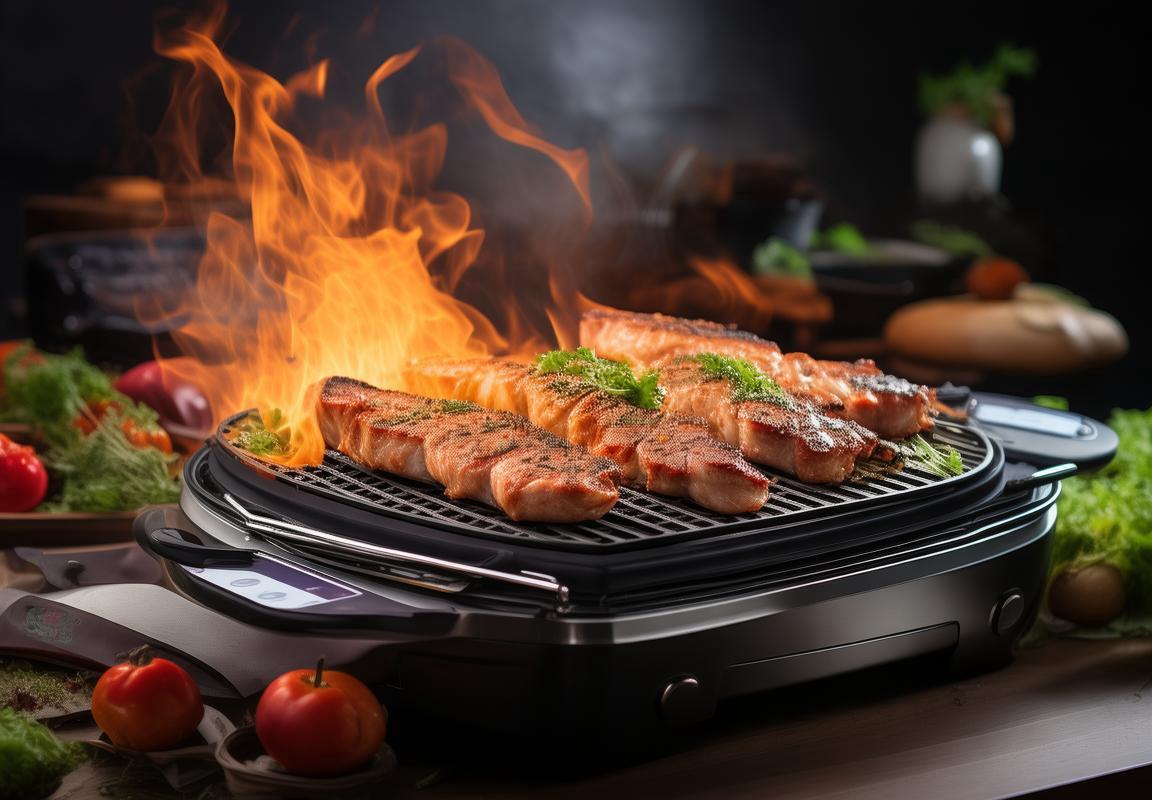
Future Outlook: Predictions for the Contact Grill Market
The contact grill market has been witnessing a surge in innovation and consumer interest. As we delve into the future, several trends are shaping the landscape, promising a dynamic and evolving industry. Here’s a glimpse into the predictions for the contact grill market:
Grill technology is advancing rapidly, with a growing emphasis on smart features and eco-friendly designs. As consumers become more health-conscious, we anticipate a rise in contact grills that offer adjustable temperature controls and non-stick surfaces to reduce the need for excessive oil. This shift towards healthier cooking methods is likely to drive market growth.
The integration of IoT (Internet of Things) into contact grills is expected to become more prevalent. Imagine a grill that can sync with your smartphone, allowing you to monitor cooking times and temperatures remotely. Such advancements in connectivity could not only enhance the user experience but also open doors for new business models, such as subscription-based service plans for maintenance and updates.
Sustainability is becoming a key concern for consumers and businesses alike. Contact grill manufacturers that prioritize sustainable materials and energy-efficient designs are likely to gain a competitive edge. This could lead to a shift in consumer preferences, with eco-conscious buyers seeking out brands that align with their environmental values.
The global market for contact grills is expected to see a significant expansion, driven by emerging markets. As these regions develop, there will be an increased demand for convenient and efficient cooking solutions. This presents an opportunity for manufacturers to tailor their products to meet the specific needs and preferences of these new consumers.
Health and wellness are at the forefront of consumer interests, and this trend is likely to influence the contact grill market. With a growing number of people looking to incorporate more plant-based diets into their meals, contact grills that can effectively cook a variety of vegetables and grains without the need for additional fats could see a surge in popularity.
The rise of online shopping has transformed the retail landscape, and contact grill manufacturers are adapting by focusing on e-commerce strategies. Direct-to-consumer sales are becoming more common, allowing brands to build a loyal customer base and maintain a direct line of communication. This shift could lead to a more personalized approach to marketing and customer service.
The contact grill market is also expected to see an increase in collaborations between manufacturers and retailers. These partnerships can help drive sales by offering exclusive deals and promotions, as well as showcasing the latest innovations in contact grill technology. Retailers that embrace these opportunities may find themselves at the forefront of the market, attracting customers with cutting-edge products and services.
As the market evolves, we predict that there will be a greater emphasis on safety and durability. With the increasing use of contact grills in professional kitchens, as well as in homes, manufacturers will need to ensure that their products meet the highest safety standards. This could involve investing in research and development to create grills that are not only safe to use but also built to last.
Finally, the contact grill market is poised for a period of innovation and disruption. New entrants are bringing fresh ideas and technologies to the table, challenging established players to keep pace. This competition is likely to lead to a variety of improvements and advancements, making contact grills more accessible, convenient, and enjoyable for consumers worldwide.